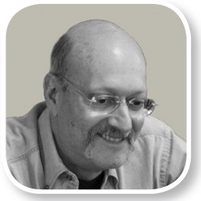






Two Different Bluffing Rangesby Steve Zolotow | Published: Aug 17, 2016 |
|
|
 Before I get to the important stuff, my best comment during the World Series of Poker arose in the following situation. A young woman raised and I called with A-Q. The flop was A-6-4. She bet, I called. The turn was a 2, and again she bet and I called. The river paired the 4, she fired a third bullet, and I called. She turned over 8-8, and said “Small pairs, I can’t hit them and I can’t get away from them.”
Before I get to the important stuff, my best comment during the World Series of Poker arose in the following situation. A young woman raised and I called with A-Q. The flop was A-6-4. She bet, I called. The turn was a 2, and again she bet and I called. The river paired the 4, she fired a third bullet, and I called. She turned over 8-8, and said “Small pairs, I can’t hit them and I can’t get away from them.”
I responded, “I have the same problem with my girlfriend.”
Now let’s get to something serious—bluffing ranges in two situations. The first is the simplest. Head-up, your opponent checks on the river. Obviously you want to bet your best hands for value. Hands that aren’t good enough to bet, but have some showdown value can be checked. Your worst hands, those, which are unlikely to win a showdown, become your bluffs. If you are making a pot-sized bet, you should have half as many bluffs as value bets. Typically bet the best 30 percent and the worst 15 percent of your hands.
Now let’s assume that preflop the cutoff raises. You are the button. Now it is more complicated to work out your ranges. Leaving aside bluffs and deception for a minute, you should three-bet your best hands for value, call with your reasonable good hands, and fold your worst hands. Now let’s add some bluffs to the three-bet range. Unlike the river bluffs examined above, these bluffs should not be your worst hands. They should be the best hands you didn’t think were worth a call. For example you might value three-bet with A-K, call with A-Q, A-J, and A-10. A-9 is not good enough to call, but you can use it as a three-bet bluff. Why bluff with a reasonable hand and not your worst hands like 3-2? Because your opponent will frequently call, and then you’d rather have a better hand to see the flop.
Our range setting is not over. So far, we have planned three-bets for value and as bluffs. We plan to call with hands in between these two. This leaves our three-bet range polarized (very good or relatively weak.) It also leaves us with an unpolarized, or condensed, calling range. When our opponents realize we won’t have a very good hand to call, they can start three-betting from the blinds as a squeeze play. They know our range is capped, so it will be hard for us to call. We have to remedy this by moving a few strong hands into our calling range. For example, flat call with A A
A and A
and A K
K , even though you three-bet with all the other pairs of aces and A-K suited. In these cases, anyone who tries to take advantage of your call will run into an unpleasant surprise.
, even though you three-bet with all the other pairs of aces and A-K suited. In these cases, anyone who tries to take advantage of your call will run into an unpleasant surprise.
I have not tried to specify all the appropriate hands for these ranges for several reasons. Your ranges depend on the range of the cutoff. If he is very loose, you can raise more and call more, but if he is tight, you need better hands. If the first raise wasn’t from the cutoff, but from an earlier position, you should be more careful about getting involved. If it is a tournament with blinds and antes, there is a larger pot to go after, so your range can be wider. If you have a very deep stack, hands that can make the nuts, like A-5 suited, become more playable, but hands like A-J offsuit become more dangerous. Your image is also important. If you have a tight image, you can three-bet more often, since they will be afraid to call.
The key points to take away from this are that:
You should devote some time to thinking about ranges for various actions in various situations.
Your bluffs when checked to on the river should be your worst hands.
Your three-bet bluffs preflop should be the hands that are almost, but not quite, worth a call. ♠
Steve ‘Zee’ Zolotow aka Zebra is a very successful gamesplayer. He has been a full-time gambler for over 40 years. With two WSOP bracelets, over 50 cashes, and a few million in tournament cashes, he is easing into retirement. He currently devotes most of his Vegas gaming time to poker, and can be found in cash games at Bellagio and at tournaments during the WSOP. When escaping from poker, he spends the spring and the fall in New York City where he hangs out at his bars: Doc Holliday’s, The Library and DBA.
Features
The Inside Straight
Strategies & Analysis